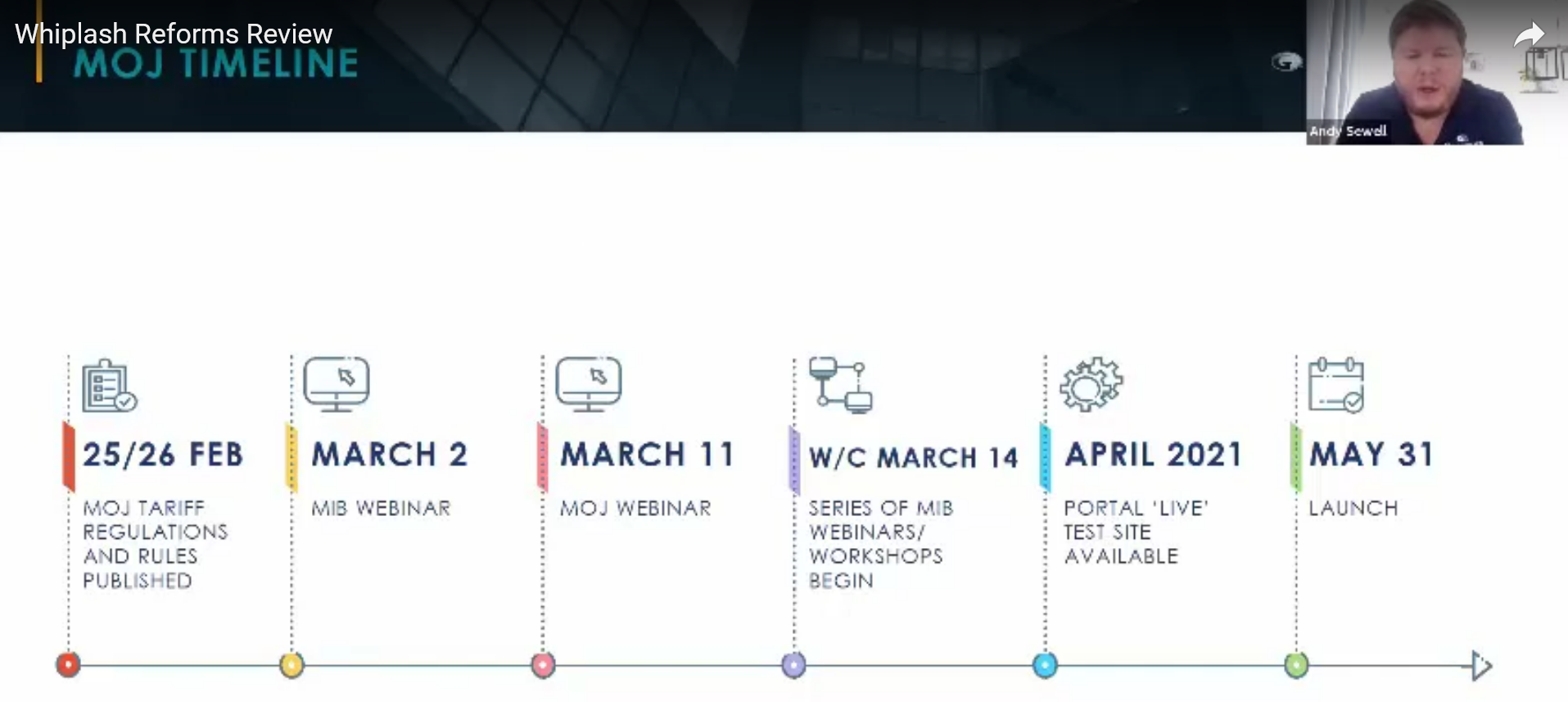

Patience is a virtue displayed by every insurance business impacted by the MOJ’s long-awaited update to the Civil Procedure Rules (CPR), in respect of whiplash reforms. Since February 26, the MOJ’s publication of the statutory instruments, pre-action protocol, and practice direction has been scrutinised by many industry organisations and associations. Among them is the team at Gallagher Bassett, which spoke at a recent MGAA webinar about what claims teams, MGAs and carriers should be doing in advance of the new reforms.
Courses of action fall into three general categories, the first of which is training, according to Andrew Sewell (pictured below), UK technical director at Gallagher Bassett. This is something the team is working on with its focus groups, he said, as it rolls out training to all its handlers regarding the portal and the test site. The live site is set to be available from April 01, which will offer the first opportunity to look at the screens in completion and see how they interact with the rules, while understanding what the rules are and the nuances between the protocols working together or against each other.
These early days will be critical to firms positioning themselves from a costs perspective, he said, though it is essential to remember that what is seen on day one will not necessarily be the same as what is seen in a year.
“So, we’ve got to be constantly and consistently learning around that,” he said. “And [crucially] the claims handler who’s used to making technical defences and speaking with a claimant lawyer through written correspondence or the phone suddenly becomes a customer service operative and [requires] conversational management training and upscaling, which is a difficult skill in itself. You’re no longer dealing with the lawyer, but with a highly emotive situation and a claimant who doesn’t know the terminology and perhaps doesn’t understand why the claim has been denied.”
Proactivity is the second element businesses must grasp before the portal goes live, said Charlotte Harrison (pictured above), senior business development manager at Gallagher Bassett. Intervention and mitigation with third parties from a motor claims perspective is the first part of this. Insurance firms must ensure these third parties are contacted promptly to control the claim and stop any of the escalating costs which can form from credit hire. This amplified demand for reducing costs links closely to the second part - which revolves around the information taken at FNOL.
“That clear validation of the policies that are involved in the accident, and real focus on frontloading the investigation, is going to be key - and those contemporaneous details become even more important given the timeframes that are involved,” she said. “The fact is that the liability for claims will be accepted if not responded to in time so, if anything, there’s a little bit more pressure around these claims at the start of their journey.”
The final point on productivity, Harrison said, comes down to the need for tight diary control by proactively managing claims and utilising this as an opportunity to streamline current processes. There are about two months before the reforms come in, so if something isn’t working or could be improved on along the claims process, and if a firm has any big whiplash exposure, now is the time to act and refine those processes.

The third and final focus centres on the new claims identification process within the notification process, Sewell said. Because of the strive for automation and the reliance that the system has on the MID (Motor Insurance Database), it’s governed at an underwriting level. So, there’s a requirement for organisations that outsource and handle claims to be paired with the insurers that are, on the underwriting level, on the MID. Those insurers have then got to look at what the setup looks like – if they want the automation of that new claim to flow through to the applicable TPA or claims handler, then they need to do another exercise at that underwriting level and make sure that the policies and the policy code within MID is set correctly within the actual portal process.
“This is important as, otherwise, you’re going to be left with the requirement to manually push through new claims between organisations, or certainly from an insurer to a TPA, and we don’t yet know how easy that’s going to be to do,” he said. “I would advocate heading to the official injury claims website and also, for insurers, in particular, to speak to your MIB rep for anything that you need to get clarified around that setup process. Because the last thing you want on day one is a funnel of claims not being where they need to go and eating into that valuable investigation period.”
